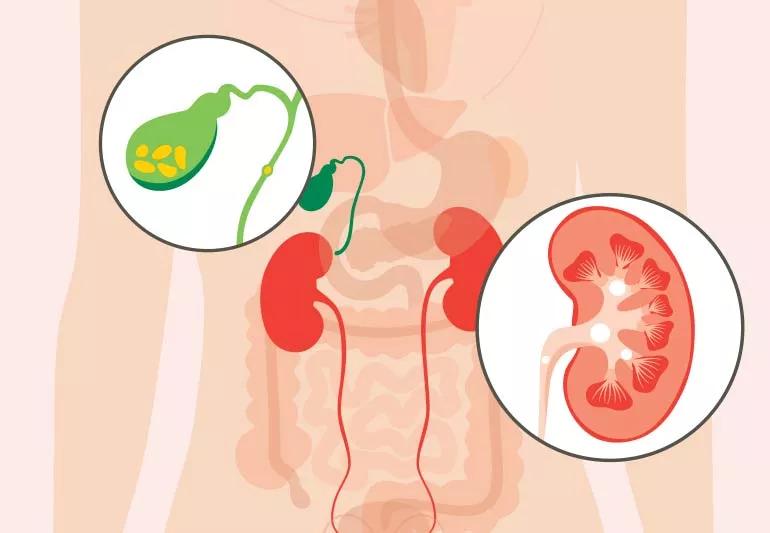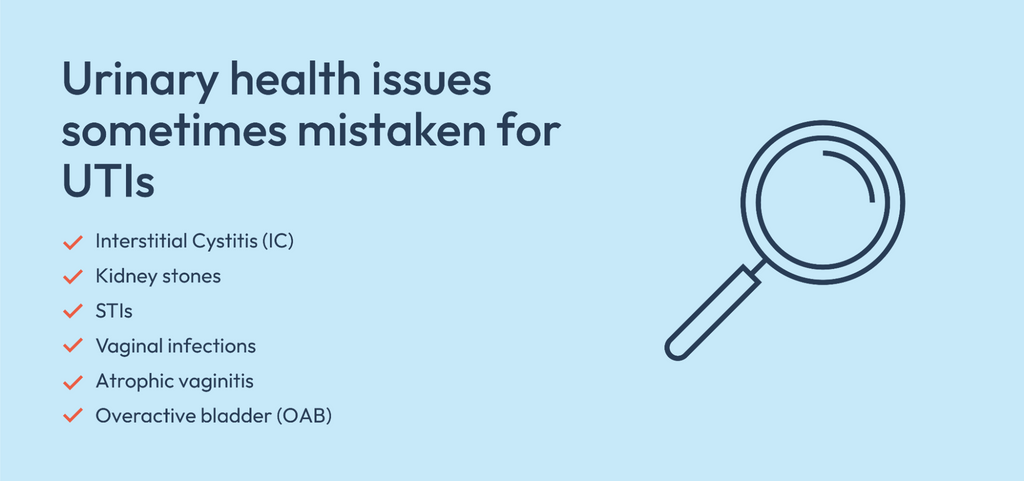A Thorough Evaluation of Treatment Choices for Kidney Stones Versus Urinary Tract Infections: What You Required to Know
The difference in between treatment options for kidney stones and urinary system system infections (UTIs) is vital for efficient client management. While UTIs are generally addressed with antibiotics that provide quick alleviation, the method to kidney stones can differ substantially based on private elements such as stone dimension and structure. Non-invasive methods like extracorporeal shock wave lithotripsy (ESWL) might appropriate for smaller sized stones, yet bigger or obstructive stones usually need more intrusive methods. Understanding these subtleties not only educates scientific decisions yet likewise boosts individual outcomes, welcoming a closer exam of each condition's therapy landscape.
Recognizing Kidney stones
Kidney stones are tough deposits developed in the kidneys from salts and minerals, and comprehending their make-up and formation is critical for efficient administration. The key kinds of kidney stones consist of calcium oxalate, calcium phosphate, struvite, uric acid, and cystine stones, each with distinctive biochemical beginnings. Calcium oxalate stones are the most typical, commonly resulting from high levels of calcium and oxalate in the urine. Aspects such as dehydration, nutritional habits, and metabolic disorders can contribute to their formation.
The development of kidney stones takes place when the focus of particular substances in the pee enhances, causing condensation. This condensation can be influenced by urinary pH, volume, and the presence of preventions or marketers of stone development. Reduced pee quantity and high acidity are favorable to uric acid stone growth.
Recognizing these variables is crucial for both prevention and therapy (Kidney Stones vs UTI). Reliable administration techniques may consist of dietary modifications, increased liquid intake, and, in many cases, medicinal interventions. By recognizing the underlying reasons and kinds of kidney stones, medical care companies can execute tailored approaches to minimize reoccurrence and improve patient results
Introduction of Urinary System Infections
Urinary system infections (UTIs) prevail bacterial infections that can influence any component of the urinary system, including the kidneys, ureters, bladder, and urethra. The bulk of UTIs are brought on by Escherichia coli (E. coli), a kind of microorganisms typically located in the intestines. Women are extra prone to UTIs than men as a result of physiological differences, with a shorter urethra facilitating much easier bacterial access to the bladder.
Signs and symptoms of UTIs can vary depending on the infection's location however often include constant urination, a burning feeling during urination, over cast or strong-smelling urine, and pelvic discomfort. In more severe instances, especially when the kidneys are included, signs might also include fever, cools, and flank discomfort.
Threat variables for creating UTIs consist of sex-related task, particular kinds of birth control, urinary system irregularities, and a weakened immune system. Prompt therapy is essential to protect against difficulties, consisting of kidney damage, and generally involves anti-biotics customized to the particular bacteria entailed.
Treatment Options for Kidney stones

If the stones are bigger or cause considerable pain, non-invasive procedures such as extracorporeal shock wave lithotripsy (ESWL) might be used. This method makes use of acoustic waves to break the stones into smaller fragments that can be extra easily gone through the urinary system.
In instances where stones are as well large for ESWL or if they block the urinary system system, ureteroscopy might be indicated. This minimally intrusive treatment includes making use of a tiny range to eliminate or damage up the stones directly.

Therapy Choices for UTIs
Just how can doctor effectively address urinary tract infections (UTIs)? The key strategy entails an extensive assessment of the person's signs and case history, followed by appropriate diagnostic testing, such as urinalysis and pee culture. These tests assist determine the causative microorganisms and determine their antibiotic sensitivity, guiding targeted treatment.
First-line therapy commonly consists of antibiotics, with alternatives such as nitrofurantoin or trimethoprim-sulfamethoxazole, depending on regional resistance patterns. For uncomplicated cases, a helpful site short course of prescription antibiotics (3-7 days) is commonly sufficient. In recurrent UTIs, service providers may think about alternative strategies or preventative antibiotics, consisting of way of living modifications to reduce threat variables.
For clients with challenging UTIs get redirected here or those with underlying health and wellness concerns, extra aggressive therapy might be essential, possibly including intravenous antibiotics and more diagnostic imaging to analyze for issues. Additionally, individual education on hydration, health methods, and signs and symptom administration plays an essential duty in prevention and reoccurrence.
Comparing Results and Efficiency
Assessing the outcomes and performance of treatment alternatives for urinary system infections (UTIs) is vital for optimizing individual care. The main therapy for uncomplicated UTIs typically entails antibiotic treatment, with choices such as fosfomycin, trimethoprim-sulfamethoxazole, and nitrofurantoin.
On the other hand, therapy end results for kidney stones vary significantly based on stone make-up, area, and size. Options range from conventional monitoring, such as hydration and discomfort control, to interventional treatments like extracorporeal shock wave lithotripsy (ESWL) and ureteroscopy. While ESWL has a high success price for smaller stones, problems can develop, demanding more treatments.
Ultimately, the effectiveness of treatments for both conditions rests on accurate diagnosis and tailored methods. While UTIs normally respond well to anti-biotics, kidney stone monitoring might need a diverse approach. Continual analysis of treatment outcomes is crucial to improve client experiences and minimize reoccurrence prices for both UTIs and kidney stones.
Final Thought
In summary, treatment strategies for kidney stones and urinary system infections differ substantially because of the unique nature of each condition. UTIs are largely resolved with prescription antibiotics, providing prompt alleviation, while kidney stones necessitate customized treatments based on dimension and make-up. Non-invasive techniques such as extracorporeal shock wave lithotripsy appropriate for smaller sized stones, whereas larger Check Out Your URL or obstructive stones may call for ureteroscopy. Acknowledging these differences boosts the capability to offer optimum individual care in taking care of these urological conditions.
While UTIs are usually addressed with anti-biotics that provide quick relief, the technique to kidney stones can vary significantly based on private factors such as stone dimension and structure. Non-invasive approaches like extracorporeal shock wave lithotripsy (ESWL) may be appropriate for smaller sized stones, yet larger or obstructive stones frequently call for more intrusive strategies. The main kinds of kidney stones include calcium oxalate, calcium phosphate, struvite, uric acid, and cystine stones, each with distinctive biochemical beginnings.In contrast, treatment end results for kidney stones vary substantially based on stone composition, size, and place. Non-invasive methods such as extracorporeal shock wave lithotripsy are suitable for smaller stones, whereas larger or obstructive stones might call for ureteroscopy.